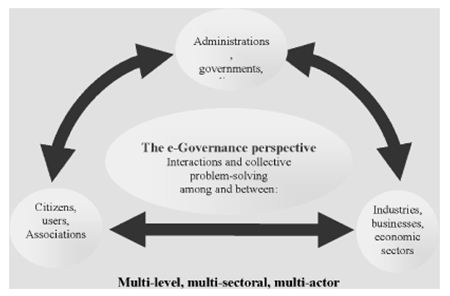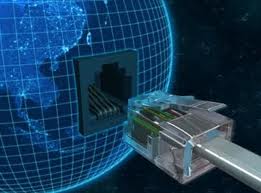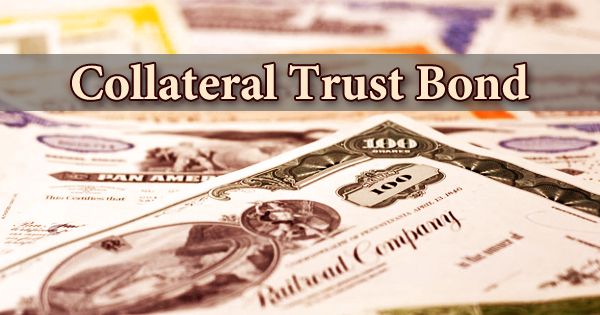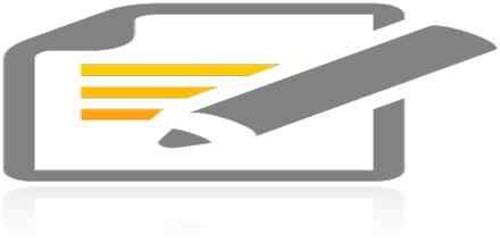1.1 Introduction
The advent of the Information Society is creating unprecedented conditions for bridging the digital divide through supporting government operations to strengthen the establishment of efficient, effective and transparent governance systems. Electronic tools can significantly improve the services and information flows from administrations to their constituencies. Communication among administrations and citizens and businesses can be enhanced and, at the same time, Information and Communication Technologies (ICTs) offer unique opportunities for the re-use and exploitation of public sector information within the emerging digital economy. Bringing out this potential will create vast economic opportunities for developing countries. However, there are different aspects and configurations of the Digital Divide: Infrastructural, Information, Knowledge, Intellectual, Human Resource Capacity, Cultural, and Content. Therefore, the Digital Opportunity also presents a “divide” among developed and developing countries. This needs different actions in different contexts and a holistic approach to solve, in an integrated manner, the various gaps existing in developing countries
Today’s world is more and more referred to as being “networked” due to the advancement of ICTs but also because of the growing phenomenon of the involvement of non-state or non-governmental actors into policy- making, either in a consultative way or through the development of new participatory approaches, often enabled or enhanced by the use of ICTs.
This is dispersing State power into autonomous local governance systems, while the industrial revolution in the past centralized it. The opportunity of using ICTs for communicating on a global scale has added new dimensions to possibilities for pursuing national, regional and local development; that is where economic and social impacts can be more valuable to the administration users and the citizens.
Recognizing the importance of information for democratic and civic life, in principle, it is required to increase knowledge and information capacities to operate in a context where institutions and infrastructure are needed to facilitate the flow of information, its availability and access. Some indicates in a straightforward positive way that “Information and knowledge are closely intertwined: to produce information, a knowledgeable agent processes new findings and data, acceptable to society and the resulting commodity is the increase of knowledge through improvement of access”. In this way, “The increment in knowledge reduces uncertainty with regard to the organization of economic and social activities, providing the capacity to effectively use available information and reach informed decisions”.
However, as a matter of fact, information is not knowledge neither competence. Information access and sharing, as well as expert data handling, necessitate a lot of knowledge. Information is not the first stage towards knowledge, neither the pre-condition of it. Often it is quite the opposite. Similarly, the increase of participation in the usage of ICTs is no automatic and linear step towards a deep, effective, sustainable or democratic evidence. On the contrary, one has to stress that to carry out a collective learning of some significance through ICTs, more horizontal processes, empowerment and trial and error linked with experience sharing must somehow take place “upstream” or at least considered quite early in an ICT-based project to constitute a democratic enhancement chance.
In this context, the relations between ICTs and governance are multiple. Governance supported by the development of ICTs can have more powerful information transmission, stimulate debate and participation and, at the same time, the establishment of information systems and knowledge management tools can facilitate governmental processes. However, it should be underlined that, when discussing integration of ICTs in administration, the focus is in the promotion of governance using ICTs as a tool, rather than the ICTs being an end in themselves.
To this extent, it is necessary to identify and to try to define the basic concepts we are dealing with, from Government to Governance, at central and local level, and including the potential role of the ICTs as a tool for good governance as well as giving a perspective on how ICTs can enhance citizens’ participation.
2.1 Basic concepts and Definition
2.1.1 Definition of Government
Government, a public organization – is part of a broader governance system. It is a means to a goal.
These days, government is seen predominantly as a public organization set up by a society for the purpose of pursuing that society’s development objectives. This comprises articulating the society’s development-related demands, proposals and needs, aggregating them and implementing responsive solutions. Enjoyment of public consent constitutes the source of government’s legitimacy. Transparency is a condition sine qua non for government’s accountability vis-à-vis its oversight body. (U.N. World Public Sector Report, 2003 – www.unpan.org)
2.1.2 Definition of Governance and Good Governance
The term “Governance” refers to a multifaceted compound situation of institutions, systems, structures, processes, procedures, practices, relationships, and leadership behavior in the exercise of social, political, economic, and managerial/administrative authority in the running of public or private affairs.
Good Governance is the exercise of this authority with the participation, interest, and livelihood of the governed as the driving force.
(Governance and Public Administration Branch, Division for Public Administration and Development Management, Department of Economic and Social Affairs, General Secretariat, United Nations – GPAB/DPADM/UNDESA)
2.1.3 Definition of Local Government, Local Governance and Good Local Governance
Local governments are administrative offices of an area smaller than a state. The term is used to contrast with offices at nation-state level, which are referred to as central government, national governments or (where appropriate) federal governments.
(Wordiq.com http://www.wordiq.com/definition/Local_government)
Local governance refers to the exercise of authority at local community level. (GPAB/DPADM/UNDESA)
Good local governance is the exercise of economic, political, and administrative authority to better manage the affairs of a locale. (LOG-IN Africa, CAFRAD/IDRC)
2.2 ICTS, Internet Government and Internet Governance
The overall objective of improving the governance systems and the performance of the public administration at all levels, enhancing the delivery of the public services to all citizens, can greatly benefit from the integration of ICTs in the process of decision making, planning, co-ordination and management carried out by governments. But what are ICTs and why should we integrate ICTs in the government process?
On a point of definition we talk of ICTs, adding “communications” to the more familiar “Information Technology”. This reflects the increasing role of both information and communications technologies in all aspects of society. Generally speaking, ICTs are defined by Stevenson in his 1997 report to the UK government and promoted by the new National Curriculum documents for the UK in 2000 as: “The study of the technology used to handle information and aid communication”. But what we are interested in, more than the study of technologies is the application to improve and “channel” information through any means of communication, based on different infrastructure. So it is important to understand what is information and what is communication. The World Bank defines ICTs as a generic term, which includes Information Technology (hardware and software) and the telecommunication infrastructure, equipment and services.
In this connection, it is worth underlining the role of ICTs as a tool for development, and not as a goal in itself. Using ICTs can help achieve development goals. This is particularly true in relation to government operations and governance in general. The integration of ICTs in governmental operations introduces the concept of Internet Government, Electronic Government, Digital Government or – in short – e-government.
According to the OECD (Organization for Economic Co-operation and Development), the definitions of e-government or Internet Government fall into three groups:
– e-government is defined as Internet (online) service delivery and other Internet-based activity, such as e-consultation;
– e-government is equated to the use of ICTs in government. While the focus is generally on the delivery of services and processing, the broadest definition encompasses all aspects of government activity;
– e-government is defined as a capacity to transform public administration through the use of ICTs or indeed is used to describe a new form of government built around ICTs. This aspect is usually linked to Internet use.
In this regard, it is assumed that “the strategic use of ICTs in government can result in a more inclusive, effective, efficient, transparent and accountable public administration, which will be key to improved economic development and competitiveness. Moreover, in enhancing the quality and delivery of public services through ICTs – especially in education, health, social security and social welfare – government may be better positioned to reduce poverty, redress inequality, and promote sustainable development”
Internet governance is the development and application by Governments, the private sector and civil society, in their respective roles, of shared principles, norms, rules, decision-making procedures, and programs that shape the evolution and use of the Internet – UN WGIG (United Nation, Working group on Internet Governance)
In other words, Internet governance is collective decision making by owners, operators, developers, and users of the networks connected by Internet protocols to establish policies, rules, and dispute resolution procedures about technical standards, resource allocations, and/or the conduct of people engaged in global internet working activities. (The Internet and Global Governance: Principles and Norms for a New Regime, by Milton Mueller, John Mathiason, and Hans Klein)
Therefore, in a point of conceptualization, we must take into consideration the multi-dimensional aspects of ICTs when discussing e-governance. In this regard, in a simple but, in our opinion very effective way, e-governance can therefore be defined as: the Governance “with and of” ICTs.

3.1 Objectives of Internet Governance
With a strategic objective to support and simplify governance for all parties, government, citizens and business, by using ICT for attaining good governance, following broad objectives of the Internet governance can be identified:
- Improve connections between citizens and government and encourage their participation in governance;
- Open up avenues for direct participation of women in government policy making process;
- Reduce poverty;
- Enhance democratization and citizen empowerment.
3.2 Major aspects of Internet Governance
Two major dimensions of Internet governance include application of ICT for the betterment of administration and application of governance to the cyber society. Following pillars support the Internet Governance system
- Computers: All hardware and software requirements of governance;
- Connectivity: All carrier systems, bandwidth etc;
- Content: The information that is exchanged between the “consumers” of the system;
- Consumers: All the human substitute systems that access and use the “content”;
- Confidence Building: Those measures that help the citizens develop confidence in the e-governance and encourage them to take to the e-transformation.
- Cyber laws
- Citizen Interface Options
- Capital
3.3 Issues in implementation
On studying various Internet governance projects, following inferences about various issues that are involved in implementation of Internet governance can be drawn:
3.3.1 Infrastructure Issues
The infrastructure issues, which are important, are poor rural telecommunications network, power problems in various parts of the country and network connectivity. Unless these three areas are improved an effective Internet governance program cannot be implemented.
3.3.2 Social and Cultural Issues
Internet governance implementation leads to information sharing at each small unit level in the masses, high awareness and transparency in governmental functioning. This also needs a strong back end functional support to successfully maintain the Internet governance initiative; in the absence of which the system will collapse. Due to corruption deep routed in the political and administrative system, majority of the people at the authoritative positions in the respective functional departments may dislike the transparent and smooth working after Internet governance initiative. Such cultural habits are difficult to fight with which is an essential prerequisite of the Internet governance. Resistance of Staff is also a very likely aspect, which needs to be taken care of by taking steps in advance and by spending goodwill among the employees.
On the other hand, people always fear to experiment new things, newer means of functioning. In the initial stages, any Internet governance project is likely to face criticism and set backs because of lesser public participation. Further owing to lower literacy rate in any country, the reach of the project remains restricted to the literate people in the society.
To catalyze the tremendous social returns that are possible, the sheer magnitude of available capital must increase exponentially and the capital must be invested strategically. Poor requirement-gathering (particularly in the case of frequent policy changes) and non-involvement of end-users during this process, poor or negligible IT awareness among decision-makers, poor management of knowledge and human resources, non-compatibility between IT projects and business processes, poor risk management, choice of technology and over-ambitious projects are among the root causes of problems in achieving significant Internet governance benefits. Poor over all literacy rate and language barriers are other issues, which limit the usage of such projects.
3.3.3 Security issues
Defining a security policy can be a complicated task as each Government must decide before hand which aspects of protection are most important, there by compromising between security and ease of use. Various security issues involved are:
- Authenticity of the information sent across the web. The use of digital signatures is therefore much more required in case of Government documents.
- Confidentiality of any transaction or information available on the network is a very crucial matter and is there fore of vital importance to the successful Internet governance implementation. Protecting the information and important governmental documents from unauthorized users is all the more important in Internet governance.
- Cryptography is an important process to protect the information from unauthorized users and is an inseparable part of network security. Tested encryption software is installed before initiating the Internet -governance.
- Maintaining and assuring Integrity of the information is also an important aspect of digital security, which becomes all the more important in Internet governance. In the absence of encryption and digital signatures, information integrity cannot be guaranteed and this may lead to new forms of fraud, as digital documents are the easiest to forge.
- Continuous availability of information 24 hours a day is important for efficient and effective functioning of the Internet governance system. This is in fact, a key distinguishing feature of the Internet governance system. Therefore any anticipated hardware problems, network errors, link failures etc. need to be safeguarded before hand.
- Network Security by using multilevel barriers is in place for effective protection of the networks. These may use password schemes, biometrics, SMART card authentication and firewalls.
3.3.4 Hardware and software issues
Identifying the appropriate hardware platforms and software application packages for cost effective delivery of public services is an important ingredient of the Internet governance system. This can be achieved by:
- Making the knowledge repository widely available through appropriate Demo-Mechanisms;
- Offering a Basket of these models to the States, Departments both in the Center and the State, which could be suitably customized as per location and work specific requirements. Towards this end we envisage to have State level models, District level models and Ministry/Department level models;
- This offer is to be supplemented by incubating and initiating efforts in this direction by various organs of the Govt. Amendment in State laws through study and consultation.
3.3.5 Administration issues
A strong political will and less corruption, encompassing potential changes with regard to physical, technical and human resource infrastructures and honest welfare measures are central to effective administration of Internet governance. A change in the mindset of people in the government and clear thinking about what needs to be achieved and where to get the expertise and solutions to achieve it in a cost-effective, time-bound manner leads to effective Internet governance. Setting up a governing body on Internet Governance for the country might help. The idea should be to further the governance processes toward easier, better citizen-friendly schemes as and where required. According to an observation, hardware and software constitute only 10% of the problem, while 85% of the problem is an organization management problem that is internal to the government. Delivery of public services like Utilities, rural and urban development schemes through EDI, internet and other IT based technologies would necessitate procedural and legal changes in the decision and delivery making processes as well as institutions, which would mean a complete revamp of the Government decision management involving faster decision mechanisms, less red tapism, changes in organization structures making it more flatter, higher delegation of authority and changes in legal provisions. These measures would lead to:
Organizational and institutional changes affecting both people and methods at all interfaces of the delivery chain.
- For this, acceptance of this Changed Processes would have to be properly understood, accepted, internalized, adopted and improved to enable full advantages of the technology being adopted in the first part of Smart Governance.
- De-layering of the decision making levels leading to re-engineering and appropriate sizing of the decision making machinery.
- Training and acclimatization of the personnel at all levels more so at the lower rung of Government management organizations.
- Loss of vested interests and assumed power as well as authority both amongst the legislature and the executive.
3.3.6 Financial issues
Apart from the ambitious work plans, the financial issues related to Internet governance have to be weighed in terms of available resources both in the Plan sector and out side it. It is here that leveraging of on going projects can be made more cost and value effective with the use of IT in a modulated fashion without any critical incremental costs
The Private sector resources have to be also carefully dovetailed with their commercial interests and those of the Government to provide value added services. The Kiosks by themselves can bring in little in terms of better delivery of services, unless the same are made economically viable and of demonstrated use to the stakeholders, viz. the public and the citizenry. Higher cost for high-end applications is another attention area.
3.4 Internet Governance Architecture & Standards
Two essential building blocks for Internet Governance are the National Internet Governance Service Delivery Gateway (NSDG) and a set of Internet Governance Standards. The NSDG would form an important middle layer component in the Internet Governance architecture. The Internet Governance Standards are detailed below under the section I and the Government Gateway under the section II:
3.4.1 The Internet / e-Governance Standards
A:Development Framework for Internet/ e-Governance (e-GovDef)
The e-GovDeF provides the context and a structure for designing, developing and offering various IT based Government Services to Citizens, businesses and other stakeholders. These contexts are specific and relevant to the Indian context. The e-GovDeF covers four major parts:
(1) Project Assessment of Sustainability (PAS)
(2) e-Services Development
(3) Re-usable elements, and
(4) Inter-operability standards.
A macro-view of the Internet/e-Governance framework in a layered approach is shown in the following diagram:
These standards / frameworks cover all aspects for effective Internet Governance from ideation to rollout. Covered in three modules, they target three distinct drivers of e-Governance:
(1) The blue book is for the policy makers. It covers the Internet Governance Development Framework incorporating PAS (Project Assessment of Sustainability), reusability of processes, patterns, designs and components, e-services development shaped by a set of standards, and an abstraction of the information elements in any Internet Government Service through the Generic Information Model (GIM); It also recommends the modeling elements of the Government Services and the reusable service processes and patterns. This looks at certain common processes across all Internet Governance projects such as e-filing, e-Payment, e-Returns etc. The GIM provides a consistent framework for requirements capture.
(2) The red book is for the Developer community. Through the Information Exchange Model (IXM) and the Information Accessibility Framework (IAF) it provides the nitty-gritty for incorporating the standard components in the design artifacts. Further, the Interoperability Interface Protocols (IIP) and the related Interoperability Interface Specifications (IIS) provide the necessary interface protocols and specifications for connecting to the services via the Government Gateway. The Security policies are expected to guide the policy makers and the developers in plugging in the required levels of security in various components of the architecture, which are covered in the Government Security Framework (GSF). The Red book also addresses protocols relating to Inter-Gateway communication in the Inter-Gateway Interconnect Specifications (IGIS). The Government Gateway as a critical interoperability mechanism also provides the specifications for interfaces to certain common services such as Payment Gateway, authentication, Services Directory, Joined up Services, the National Services Directory and other third party Service Providers. These are addressed in the Gateway Common Services Specification (GWCSS).
(3) The green book is for the domain experts. Standards relating to data are covered here. Data Standards Definition (DSD) standardizes on commonly accepted data definitions for various elements of data used in the Government Service; the Metadata Framework (MDF) helps in easy search and retrieval, by incorporating commonly accepted attributes in various documents of the Government. The result of this work would be the e-Thesaurus and Information Source Atlas (ISA).
B:The Internet / e-Governance Standards so far drafted and being reviewed
Seen from the perspective of Standards playing an important role in various components of Internet Governance projects, we could classify the standards as follows:
Standard Classes | Blue book | Green Book | Red Book |
Message Envelope | GIM | IIP IIS IXM | |
Content | |||
Process | SLA & Legal | DSD MDF | |
Inter-Gateway | IGIS GW-CSS | ||
Access | IAF | ||
Security Framework | GSF | ||
Project sustainability | PAS |
The following diagram provides an illustration of role of these standards in a transaction for delivery of Government Services:

3.4.2Government Gateway – suggested core of the Internet Governance Architecture
A critical component identified in improving the functioning of the Government and to harness the information wealth of the Government towards improving the effectiveness of governance is the National Internet Governance Services Delivery Gateway (NSDG). The National Gateway aims to achieve a high order of interoperability among autonomous and heterogeneous entities of the Government (in the Centre, States or Local Governments) in an asynchronous manner, based on a framework of Internet Governance Standards.
NSDG as a messaging middleware achieves integration amongst diverse set of applications built on varying platforms through compliance with a set of Internet Governance Standards that enable consistent communication [Interoperability Interface Protocol and Specifications (IIP/S)] and conformance to international standards that evolved concurrently with the evolution of the Internet as a major enabling platform, such as the XML specifications and SOAP. The messaging infrastructure takes full advantage of the Extended Markup Language (XML) and the SOAP specifications to achieve the desired intercommunication capability. This middleware routes service requests from a Service Seeker to a Service Provider (typically a back end department that puts up its service for electronic delivery) and in return sends the response back to the Service Seeker through the Gateway, all in an asynchronous manner.
The Government Gateway will link three major components:
Service Providers (SP) would be the back end Government Departments or any other third party Service Provider offering specialized services such as authentication or payment Gateway services or the Joined up Services. Collectively referred to as “Service Provider (SP)”, the SP would provide specific services to citizens and businesses and to other Government Departments seeking specific services from other Government departments or any third party service providers.
The Gateway may link up to the Joined up services which is the aggregation / de-aggregation mechanism of multiple services from the back end departments to be offered as a single service to the service seeker. The Joined up Service will be set up as a separate service freeing the Gateway of its primary responsibility in the management of joined up services. Many such Joined up services from certain verticals is a distinct possibility.
Service Access Providers (SAP) enables the citizen to access Government services and information electronically and to develop a personal profile with respect to their dealings with Government. It will facilitate the organization of public services around the needs of the citizen and will promote seamless service delivery. It will also realize the concept of joined up Government by enabling the citizen to have a one-point interaction with the Government services electronically. Linked to the Service Access Providers (SAP) will be the Delivery Channels, which would be the ultimate front-end access mechanism for the citizens and businesses for the electronic delivery of services. Services will be accessible from virtually any device. Such delivery channels could include Mobile Phones, Personal Digital Assistants (PDA), CallCenters, Information Kiosks, Personal Computers including notebook computers, or any other new devices providing easy access to the end user. This would also include temporary delivery channels set up by the department themselves or through any third party arrangement to meet additional workload during peak seasons to cater to public demand.
Other Gateways – The future Internet Governance space would see many Government Departments offering many services, which will be consumed by the Citizens, Businesses and other Government Departments. All of these services may be distributed among more than one gateway in the Centre, States not excluding Gateways in specialized verticals (Gateway Constellation), which, in turn, may reside under different administrative domains.
A Gateway becomes meaningful when there are multiple services offered, each operating on different technology platforms, when multiple units or sections within the Government Department needs to be integrated.
Potentially, there could be three distinct types of gateways: The Central Gateway, the State Gateways and Department-specific Gateways. The following table summarizes the roles of the Gateway with in each of these entities:
| Central Gateway | State Government / Local body gateways | Department / Ministry specific Gateway of the Central Government |
|
However, in order to achieve a “simplified” and “unified” face of the Government, it is imperative that all these gateways, under various administrative domains work in close co-operation and in unison to support the “outcome based” service delivery to the Citizens, Businesses or Government Departments. To achieve this, it is necessary that all the gateways under various administrative domains have the ability to communicate with each other and transfer relevant information as and when required.
The following figure illustrates National Gateway structure and positioning within which
the Government Gateway, Citizens and business will operate:

List of e-Governance Standards drafted so far
| DSD | Data Standards Definitions | IGIS | Inter-Gateway Interconnect Specifications |
| GIM | Generic Information Model | IIP | Interoperability Interface Protocol |
| GSF | Government Security Framework | IIS | Interoperability Interface Specifications |
| GWCSS | Gateway Common Services Specifications | IXM | Information Exchange Model |
| IAF | Information Accessibility Framework | MDF | Metadata Framework |
| PAS | Project Assessment of Sustainability | SLA | Service Level Agreement & Legal FW |
4.1 Internet Government and Internet Governance: challenges and threats
The development of Internet government and Internet governance takes place in a very specific environment and contextual pressure which we must understand and learn, in order to steer at best. This overall change can be identified as manifold, although producing a composed impact on our lifestyle, level of wealth and relationships, inter-regionally and inter-nationally speaking.
In particular, three main aspects should be stressed, to better understand the phenomenon:
Globalization:
Globalization appears as an emerging and constantly reinforcing process. Globalization is more than just the “mundialisation” identified by previous researchers, from Braudel to Wallerstein, rooted in Middle Age discoveries and expressed through successive expansions, themselves supported by ever more efficient communication means, up to the complete coverage and information production upon, of the planet as the ultimate cognitive object. Globalization is the effect of this building process in the sense that its overall power relationships (let us think about conflicts or the inequalities of means and performance), but also local initiatives may have an impact instantly or gradually on the rest of the world, thanks to highly interconnected processes and interests. It is, needless to say, that ICTs reinforce this process. Globalization can be perceived as a source of opportunities, as the scale for any activity tends to take place in a much broader arena than before, but also as a constant pressure, with positive and negative consequences.
Economic competition:
Economic competition, as a result of the previous phenomenon, became pervasive and almost a safeguard free paradigm, with significant consequences in terms of energy and material output, nature transformation and technology mastering, but also social and knowledge divides as well as damage at various scales and severe environmental threats ahead; economic competition is believed to benefit the customer, encourage innovation at all levels and, as a consequence, generate a better society. It also generates local shifts and undesired effects, with economic, social and cultural dimensions, to which remedies must be found. Public policy and more significantly political elites and leaders in major OECD countries have set up a framework for developing competition which goes even further, changing the rules of politico-economic regimes in a serious program trend called liberalization.
State transformation
State transformation, in this context, reinforced local means to express needs, projects and alliances in separate terms are growing in parallel with the pressure of globalization and transnational forms of economic competitiveness; it is therefore no surprise to see the state entering a phase of redefinition. Sovereignty is often at the core of the discussion, but fundamentally, what seem to be essential state prerogatives in most regions of the globe, are being rearranged: public service delivery can often be delegated, with the necessary reinforcement of policy making and regulation capabilities towards more efficient, ethically consistent supervision of services. It is of course particularly the case in industries traditionally owned by the state in many countries (telecommunications, energy industries, transport, health, etc.), but also of more specific administrative services (let us think of geographical information systems for instance).
In fact, the numerous e-activities, e-products, and e-services which are currently being displayed in the public sector cannot be fully understood, appreciated and assessed if they are not placed within the much broader framework of state transformation.
However, it is important to stress why. Indeed, the transformation of the state’s status encompasses changes in three separate dimensions, namely:
1. The growing emergence of non-state actors, basically transnational corporations (TNCs) and non-governmental organizations (NGOs). Increasingly, the state has to share its power with these non-state actors. Such power sharing is most pronounced at the supra- and at the infra-national levels.
2. The growing emergence of levels of managing public affairs, other than the nation-state level. I refer here in particular of the emergence of supra-national levels (EU, global), as well as of infra-national levels (local, regions).
3. The growing differentiation of the state’s three main functions, namely the service delivery function, the rule-making function and the regulatory function. These three functions can be increasingly treated as being separate from each other and therefore being shifted to the different levels and the different actors.
These three movements are being combined with each other, which leads to the fact that public affairs become more and more fragmented (in terms of functions), diluted (in terms of levels) and outsourced (to non-state actors). There is, in particular, a deficit of cross-functions, seamless operations in which non-state stakeholders can play a proactive role. At the same time, enterprise-based and private individuals’ e-activities develop quite freely and increasingly. There is therefore a place for a different type of steering than the one e-government promotes.
4.2 Internet Governance in Bangladesh
- Ministry of Finance has customized software for budget planning, sensitivity analysis, impact analysis, financial projections and various reports;
- National Board of Revenue is computerizing the revenue budget procedure;
- Both Dhaka and Chittagong Stock Exchange are highly computerized and networked, allowing citizens to trade with much more ease than before;
- Ministry of Science and ICT creating web sites containing information about various ministries;
- Ministry of Communication Provides online searchable database of contractors, tenders. They have also created a Project Monitoring System for tracking progress of projects:
- The Chittagong Customs House has been automated in 2008 in order to increase revenue and check irregularities through enhancement of its efficiency.
4.3 Hong Kong Internet governance
4.3.1 Infrastructure
– Equipped external telecommunications capacity: 1,152 Gbps (March 2006)
– Mobile phone penetration rate: 125% in 2006 (104% in 2003)
– Household PC penetration: 70% in 2005 (68% in 2003)
– Broadband household Internet penetration 66% in 2006 (50% in 2003)
– PC penetration in business: 60% in 2005 (55% in 2003)
– Internet penetration in business: 55% in 2005 (48% in 2003)
– Over 50% of businesses adopted some form of e-business in 2005
4.3.2 Digital Consultation: Government’s role in digital development
– Facilitating a digital economy – outsourcing – R&D – facilitating convergence – CEPA
– Promoting advanced technology and innovation – cyber port – university R&D (Science park) e.g digital media center, 3G, DRM, etc.
– Hong Kong as a Hub for technological cooperation and trade – Mainland integration – education – business environment, IPR – communication authority
– Public service upgrade – e procurement (work flow and communication), health record, transport
– Building an inclusive, knowledge-based society – digital divide fund and DRM
4.3.3 Hong Kong Internet governance Strategy
– New strategy for e-government services delivery
– Customer Relationship Management (CRM)
– Channel Management Strategy (e.g email)
– E procurement
– Measuring the benefits of Internet governance initiatives
Examples: ESDlife 2001, GovHK and Youth.gov.hk
4.4 Case studies from India
Internet Governance is the next big trend occurring in India with at least half a dozen states jumping onto the bandwagon. While these are individual state government initiatives, they lack a national perspective. Yet, with the realization of the benefits of Internet Governance among the central and state governments, in India it can actually become a reality. This will enable a healthy citizen government interface. State governments who are jumping onto the Internet Governance bandwagon are taking initiatives in this direction. Clearly the southern states of Andhra Prades, Tamil Nadu and Karnataka have taken the lead in terms of implementing these projects at different citizen-government interface departments. Other states across the country have been swiftly moving to keep up with the changes in the south, and states like Rajasthan, Gujarat, Maharashtra and West Bengal have been trying to catch up fast. Also coming up are Kerala, Orissa, Punjab and Madhya Pradesh, to name a few.
4.4.1 VOICE: Online delivery of municipal services in Vijayawada
VOICE project was launched in Vijayawada which is located in the banks of river Krishna in the Krishna district of Andhra Pradesh in June 1998 and implementation was completed in December 1999. There are two components of the VOICE system:
- Work stations distributed in key departmentswhere the work of the department has been automated.
- Some information can be accessed from an Interactive Voice Response System. Those with an internet connection also can connect to the Web Server and retrieve information.
The hardware components include four servers located in the municipal office and 18 clients distributed amongst various departments networked in a LAN. Each kiosk has two terminals with multilingual software. Application software such as Lotus Notes for grievance work and a GIS are used actively. Some of the automated functions include town and country planning, taxation, public health, estate, engineering, municipal budget allocations, birth and death certificates and registration of complaints.
Implementation issues
Apart from the huge volume of data that was required to be put in, the local officials resisted the move, fearing that an automated system would prevent all scope of bribery which constituted a substantial part of their income. Besides, it would talk a while to weak the system to the precise working requirements of the officers-so as to reduce time required for transition.
Benefits
The system has effectively reduced corruption, increased responsiveness of public officials with in the municipality. Besides, the system offers ready access to statistics pertaining to population and municipal assets. Overall, it has been able to increase efficiency of the urban local body at large.
5.1 Conclusion
As stated at the beginning, it will be important for government to continue to use the nomenclature of internet government, internet governance and internet democracy for a number of reasons. This is a growing subject matter and it is essential that governments create harmony and consistency in any evolutions being undertaken. The growth of ICTs and programs, implementing old and new technologies, requires a continuous stream that can be understood by the public. The pillars of public administration, evolved and articulated over the past three to four centuries, have created a professional and modern public service. This evolution has come about through careful debate, trial and error and implementation. Change as has been needed as public service organizations around the world grew to cope with the challenges of the modern world. Public Administration as a discipline is recognized and accepted in academic and public sector institutions worldwide.
The pillars of Internet government and Internet governance are now being defined and considered as the natural extensions of the sound methodologies of how government organizations should be run. It is recognized that while the rapid evolution of new technologies have created challenges for all governments, sound administrative principles are the order of the day. It is not a question of throwing out all that public sector has developed over the past hundreds of years but rather taking the tried and true principles of public administration and applying them to the “e” world. Governments by nature are conservative organizations and slow to adapt to change. In the private sector slowness in adapting to change can be disastrous for a company who may have to close up shop because of poor administration, bad administrative practices, errors in judgment about changes within their company, or misreading of the public mood. Companies are very much subject to the winds of change.
Internet government can be a more productive version of government in general, if it is well implemented and managed. Internet governance can evolve into participatory governance if it is well supported and architected. What stands in the way of good Internet government and Internet governance is establishment resistance from many who do not wish to change the status quo, and public cynicism, the latter being a much larger issue above and beyond e-government and e-democracy. Given the way that technology developments are currently shaping public expectations however, citizens will continue to expect more as new states of technologies evolve. The transition to participatory governance will probably be slower, messier and costlier than it need be, but democracy always has been somewhat chaotic.
















